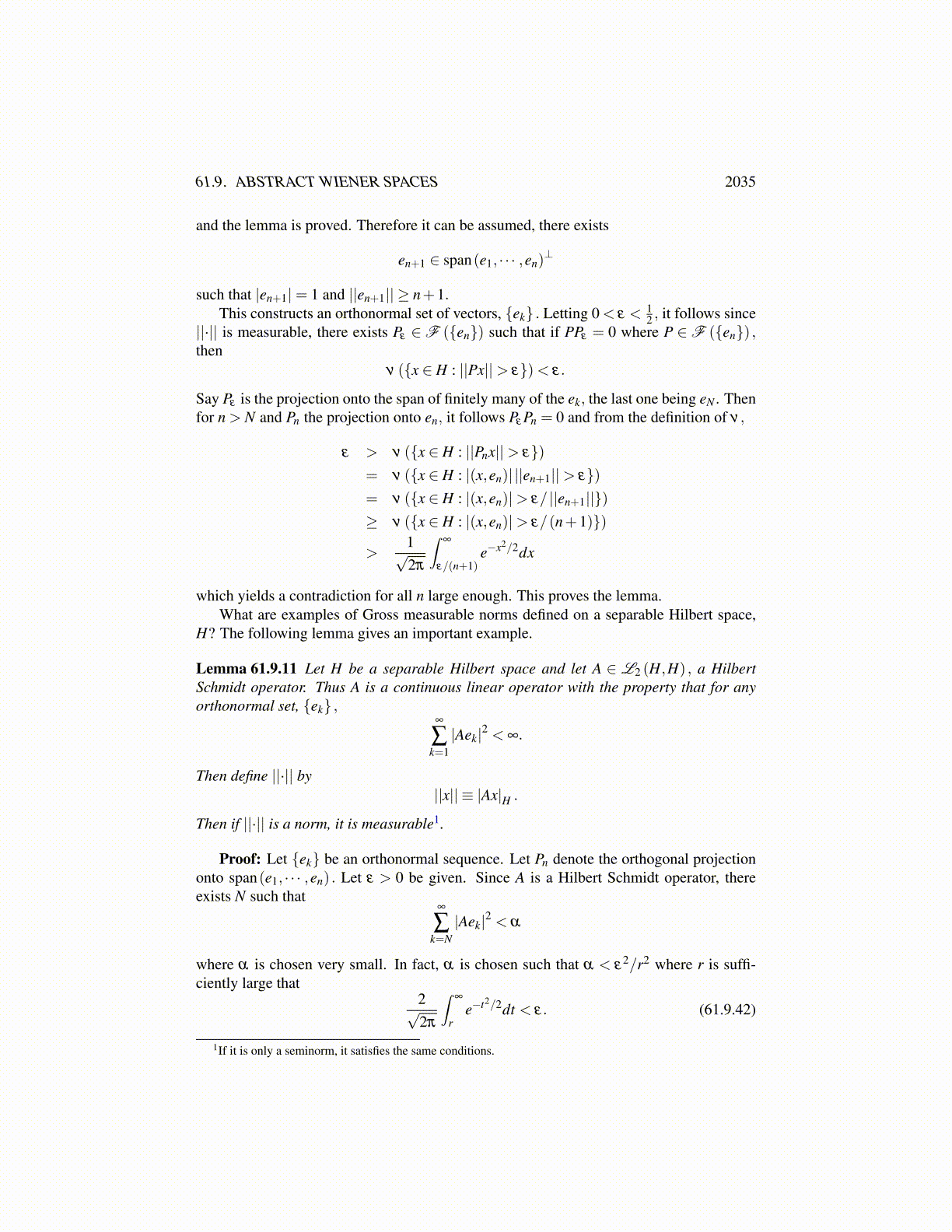
61.9. ABSTRACT WIENER SPACES 2035
However, H is also equal to the countable union of the sets,
An ≡{
x ∈ H : ((x,e1)H , · · · ,(x,ean)H) ∈ B(0,n)}
where an→ ∞.
ν (An) ≡ 1(√2π)an
∫B(0,n)
e−12 |t|
2dt
≤ 1(√2π)an
∫ n
−n· · ·∫ n
−ne−|t|
2/2dt1 · · ·dtan
=
(∫ n−n e−x2/2dx√
2π
)an
Now pick an so large that the above is smaller than 1/2n+1. This can be done because forno matter what choice of n, ∫ n
−n e−x2/2dx√
2π< 1.
Then∞
∑n=1
ν (An)≤∞
∑n=1
12n+1 =
12.
This proves the proposition and shows something else must be done to get a countablyadditive measure from ν .
However, let µ (C) ≡ νM (C) where C is a cylinder set of the form C = B+M⊥ for Ma finite dimensional subspace.
Proposition 61.9.8 µ is finitely additive on C the algebra of cylinder sets.
Proof: LetA≡ {x ∈ H : ((x,e1) , · · · ,(x,en)) ∈ E} ,
B≡ {x ∈ H : ((x, f1) , · · · ,(x, fm)) ∈ F}
be two disjoint cylinder sets. Then writing them differently as was done earlier they are
{x ∈ H : ((x,e1) , · · · ,(x,en) ,(x, f1) , · · · ,(x, fm)) ∈ E×Rm}
and{x ∈ H : ((x,e1) , · · · ,(x,en) ,(x, f1) , · · · ,(x, fm)) ∈ Rn×F}
respectively. Hence the two sets E ×Rm,Rn×F must be disjoint. Then the definitionyields µ (A∪B) = µ (A)+µ (B). This proves the proposition.
Definition 61.9.9 Let H be a separable Hilbert space and let ||·|| be a norm defined on Hwhich has the following property. Whenever {en} is an orthonormal sequence of vectorsin H and F ({en}) consists of the set of all orthogonal projections onto the span of finitely